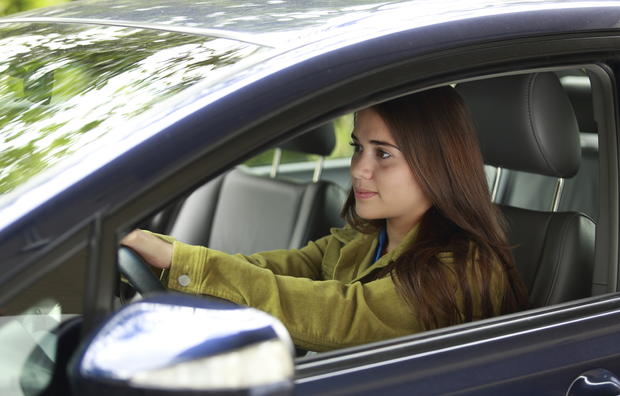Are teen drivers less dangerous or just driving less?
A friend emailed me a picture of his 16-year-old daughter holding up her first driver's license. The caption: "Look out, world!"
As we race into the "100 deadliest days" for driving, when teenagers are off from school and on the road, Americans -- or at least the police, auto insurers and the motoring public -- are on the lookout for teen drivers, who cause proportionately more accidents than the general public.
The police bombard them with tickets, while insurers charge them -- or their parents -- huge premiums to let them get behind the wheel. The media demonizes them as maniacs on the road, addicted to speed, talking or texting on cell phones, and paying attention to everything but driving.
Is this fair? In recent years, auto accidents, injuries and deaths have risen, along with insurance rates. Fatalities increased nearly 8 percent last year.
Yet teen deaths due to driving have plunged. In 1978 there were nearly 10,000 teenage drivers killed, according to the Insurance Institute for Highway Safety. But that number has dropped almost every year since. And in 2014 there were only 2,600 deaths.
Are teenagers getting more cautious behind the wheel? Adult insurance policy holders pay an average of nearly 80 percent more when they add a teen driver to their policy. In New Hampshire, teen drivers cost a staggering 125 percent more. So you can bet the old man will reach for the car keys if junior shows up with a summons, or puts a crease in the back fender, because dad knows his premium is going to go up.
Skeptics would say teens aren't any smarter, they're just poorer. The recession hit teenagers, who have a harder time finding work, harder than other age groups. People who live near a middle- or lower-income high school have seen 17- and 18-year-olds, who used to drag race to the parking lot, now riding their bikes to school. These days, when teens put the pedal down it's often on a ten-speed.
"The majority of American teens today delay getting a driver's license," according to the AAA Foundation for Traffic Safety, which researches highway safety issues. Less than half get it within 12 months after they are eligible and only a little over half by their 18th birthday. More than a third told the AAA that driving was "just too expensive."
So it comes as no surprise that many of those who are riding on two wheels just don't have the bucks to pay for even a second- or third-hand car and the insurance that goes with it.
Only 25 percent of teens living in households with incomes of less than $20,000 got their licenses before they turned 18. Just the opposite for teens residing in homes with incomes of $100,000 or more. Two-thirds of white teenagers got their licenses, slightly more than a third of black teens got theirs, and an even lower percentage for Hispanic youth.
All this contrasts sharply with two decades ago, when getting a set of wheels was the most important thing in a teenager's life. Back then two-thirds of all teen drivers had their license before they turned 18, according to the AAA.
Ironically, a well-intentioned multi-state governmental program gone amuck could be partially responsible for the lack of teen drivers. The graduated driver's license (GDL) program adopted by every state in the country allows teens to be on the road sooner, but generally sets limitations, such as no driving at night or out of state; having a licensed adult in the car; not having a bunch of friends along for the ride; displaying special stickers showing that you are a GDL driver; and going through a series of graduated steps on a learning curve that leads to a full license at age 18.
Some teenagers have said they didn't want to bother with the hassle of getting a GDL, since the program could add to the cost of a license. Prospective teen drivers often need to attend private driving schools, which have replaced the traditional "driver's ed" once offered for free in high schools.
AAA warns that teens who opt out of learning to drive because of GDL restrictions and wait until they turn 18 to get their full license may not be doing themselves, or the rest of us, a favor. They will lack the training they would have learned if they had started driving earlier while under supervision.
The good news for all of us, and especially teens, is that the recession appears to be winding down. More young people are finding jobs and earning a paycheck. And with gas prices near an eight-year low, teens will be getting behind the wheel in increasing numbers -- but with less training.
So will teenage driving deaths continue to trend downward as we steer through the 100 most dangerous days? Look out, world!
